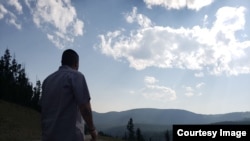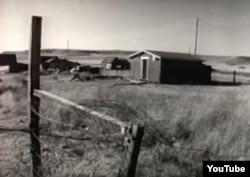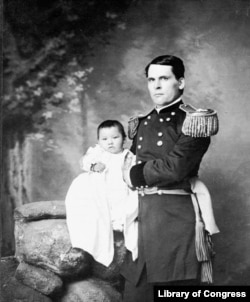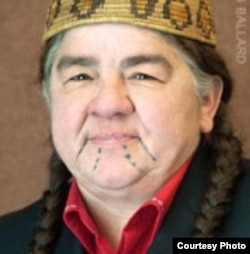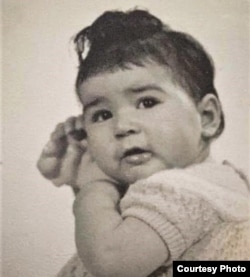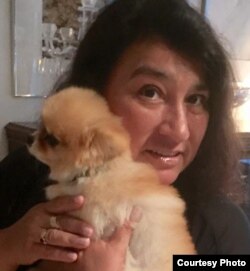Georgia resident Steve Bailey was 19 when he heard about an experimental cell transplant therapy for Type 1 diabetes he’d had since infancy. He asked his parents to donate cells.
“And my mom looked at me oddly and said, ‘We need to talk.' I felt as if I’d been hit in the gut with a bat.”
Later, he hired a private investigator, who discovered Bailey had been born in Mission, South Dakota, on the Rosebud Indian Reservation to a 14-year-old Lakota girl whose name had been cut out of his birth certificate with an X-Acto blade.
“I was taken into custody by Catholic Services. I was so young that the clamp was probably still on the umbilical cord. And less than a week later, I turned up in Atlanta, Georgia, and was turned over as a ward of the state.”
Bailey said he has reason to suspect he may be the illegitimate son of a pedophile priest who taught at St. Joseph’s Mission at the time. But unless he finds his mother, he’ll never know for sure.
A thousand miles west in San Antonio, Texas, Mike Paiz, 37, found out that his father was a Chippewa Indian who had been abducted as an infant from Hill 57, a tiny, impoverished community near Great Falls, Montana. He drove 25 hours to Montana to find his grandmother, only to learn she had died.
“When I stepped onto Hill 57, I had such mixed emotions — more painful ones, I guess, because I was crying,” he said. “I spent days and days trying to find where she was buried but couldn’t. I just can’t let it go.”
‘Lost Birds’
Whether removed from their homes by the government or stolen, these children, now adults, have been dubbed “Lost Birds” after Zintkála Nuni (Lost Bird), an infant Lakota girl found alive on the battlefield following the 1890 Wounded Knee Massacre and adopted by a white Army general.
Today, hundreds of lost birds are looking to find their way back to family and tribe.
Adoption files were usually physically sealed, making it impossible for adoptees to find lost family.
Some states have made it easier to access information. Others won’t release it without a court order. Some lost birds turn to the American Indian Adoptees website, authored by journalist, author and adoptee Trace Lee Hentz.
“If a person knows their name and tribe and wants to go into reunion with a tribal nation, I first advise them to approach someone outside their birth family who might have known the parents,” said Hentz, “because a lot of times, we don’t know the circumstances.”
A growing number of adoptees turn to do-it-yourself DNA tests, hoping to match up with families via online genealogy databases.
“I try not to encourage people to do DNA because the databases are not secure,” said Hentz, expressing a fear common among Native Americans who mistrust sharing personal information with authorities. “It’s not a private service.”
Hentz frequently refers people to genealogist Karen Vigneault, a member of the Iipay Nation of Santa Ysabel in California.
“There is so much that goes on in the minds, hearts and souls of adoptees, so much pain over the decades,” Vigneault said. “I feel like some kind of a train conductor, working to round up all these souls and bring them back home.”
Vigneault is currently helping a woman adoptee in Iceland find her father, a Native American member of the U.S. military who was stationed in Reykjavík more than 50 years ago.
“I was 28 years old when I met my blood mother,” Guðrún Emilsdóttir, 51, said via email. “She told me that she and my father had been together for a year and that she didn’t see any future in it, which is why she decided to hide her pregnancy from him."
Vigneault arranged for Emilsdóttir to take a DNA test. The results showed her to be of Ponca and Ote Missouria heritage. They quickly found her father, now deceased, and may have located a living sister.
“My feelings are very mixed, between nervousness and excitement,” she said. “I’m prepared for everything.”
Some reunions are happy. Benjamin Browning found both of his biological parents living on the Pine Ridge Reservation in South Dakota, home to the Oglala Sioux Tribe.
“It’s changed my life 1,000 percent,” he said. “I’m related to probably three-quarters of the tribe — about 20 to 30,000 cousins."
Some reunions are tragic. A 73-year-old man who asked not to be identified discovered he had been born to a Mi’kmaq mother in a notorious Canadian home for unwed mothers and sold on the black market to a couple from New Jersey.
“I found out I have 12 half-siblings, but they feel my existence tarnished their mother’s memory, and they refuse to have contact with me.”
Sadly, said Vigneault, this experience is all-too-common.
“I’ve had to tell a few people, ‘Look, I’m sorry your mother rejected you again, but at least we know what tribe you are from, and let’s just stick with that and work around it.'”
EDITOR'S UPDATE: Guðrún Emilsdóttir's father has been identified, and Karen Vigneault may have located a living sister.




